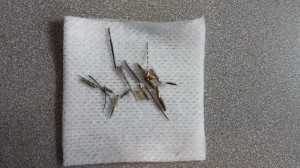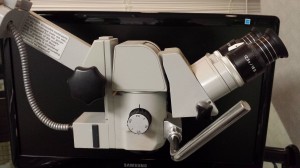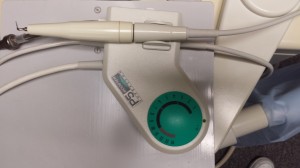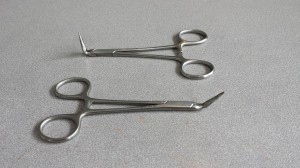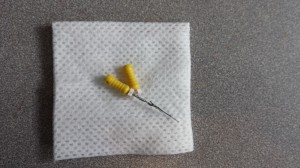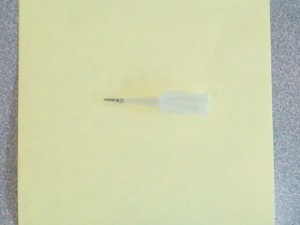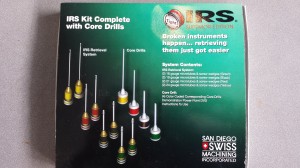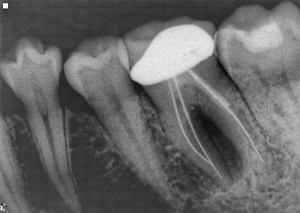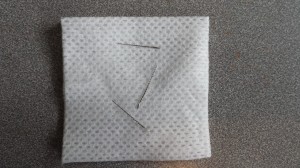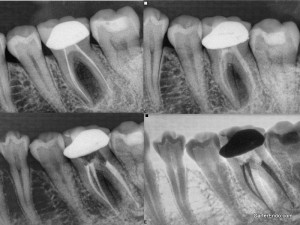Cast posts, titanium posts, threaded posts, stainless steel posts, intentionally separated instruments, unintentionally separated instruments, plastic thermafil carriers, metal thermafil carriers, stainless steel wire, silver points and the list of things I’ve taken out of teeth goes on and on.
(And these are just from the past several months)
Removing things from teeth is a lot of fun. You really never know what you will find and despite your initial plan, you will often need to employ a wide range of strategies to achieve the end result. Removing these obstructions from the tooth can also be challenging. It is, however, made easier with the use of the modern technologies available to us today. Many of the things you need to remove intracanal obstructions are already in your office!
The first, is the Dental Operating Microscope. Without this tool, it is very difficult to get enough light with magnification into the field to deal with these cases. Often the micromovements of the obstruction are barely detectable, but being able to visualize it provides valuable feedback during the process.
The next is an ultrasonic device. Although I currently use P5 by Satelec, I have used the NSK Varios as well and have not been disappointed in either device.
A wide range of forceps that can be used inside of the tooth at different angles is helpful. I have acquired a number of them over the years, and usually include cotton pliers(locking and nonlocking), needle holders, and hemostats on the tray as well. You never know how the obstruction will be oriented or what the path of draw will be.
You will also need:
Composite Tips
Various assorted dispensing tips
K Files
Once you have your armamentarium in place, then you have to determine how you will put them into action. While you don’t always know which technique will ultimately remove the obstruction, it is always good to start out with a plan. A good friend of mine always says “Fail to plan, plan to fail.” I think this is sound thinking. Some of the strategies I use include:
1. Direct Ultrasonic Action
The most straightforward approach, it isn’t always my first choice, just usually. Silver points and NiTi files don’t like direct ultrasonic action, particularly when the power is too high. Water irrigation is a necessity, so it turns into true four handed dentistry under the microscope. You don’t want to see what it looks like when proper irrigation is not used.
2. Indirect Ultrasonic Action
This is a good approach when you are facing an obstruction that will not tolerate the direct application of ultrasonic energy. This is also a good approach when the obstruction can be grasped, by either forcep, braid or IRS (see below).
3. K File Braid
When you are able to bypass the obstruction in multiple locations, the instruments can be braided to grasp and remove it.
4. Swivel Tip
If you are able to fit a composite or calcium hydroxide tip over the obstruction, then you may be able to remove it. Using composite as an adhesive allows you to use these tips to unscrew obstructions in the canal.
5. Instrument Removal System
This system is still available for removing canal obstructions. While I keep it in my office, I really only use it sparingly. I have found that is has limited versatility.
In this case, the patient had intermittent symptoms and evident bone loss secondary to endodontic treatment.
A combination of direct ultrasonic energy and braiding(with and without indirect ultrasonic energy) was used to remove these obstructions.
We were able to medicate this tooth with calcium hydroxide and subsequently obturated the case.
So far, this case has been a success. It was originally treated as an early thermafil case, and hopefully the patient will be able to retain it for many years.
Some final thoughts:
Don’t use ultrasonic energy without irrigation.
When removing separated instruments, block out other canals. Separated instruments are usually fractured under pressure and store a large amount of potential energy. When loosened this energy is released and the fragments often discharge rapidly. They can shoot out of the tooth, but they can also find their way into other canals.
Separate the removal of the obstruction into two different phases: the loosening of the obstruction and then the removal from the canal system.
Patience. You never know how long it will take and you really never know if you can remove the obstruction. Experience helps, but the process requires patience.
Next time, we’ll talk about how to deal with fiber post removal. I’m looking forward to it. But not as much as I am looking forward to this:
No matter what the groundhog says, it can’t stay winter forever!
